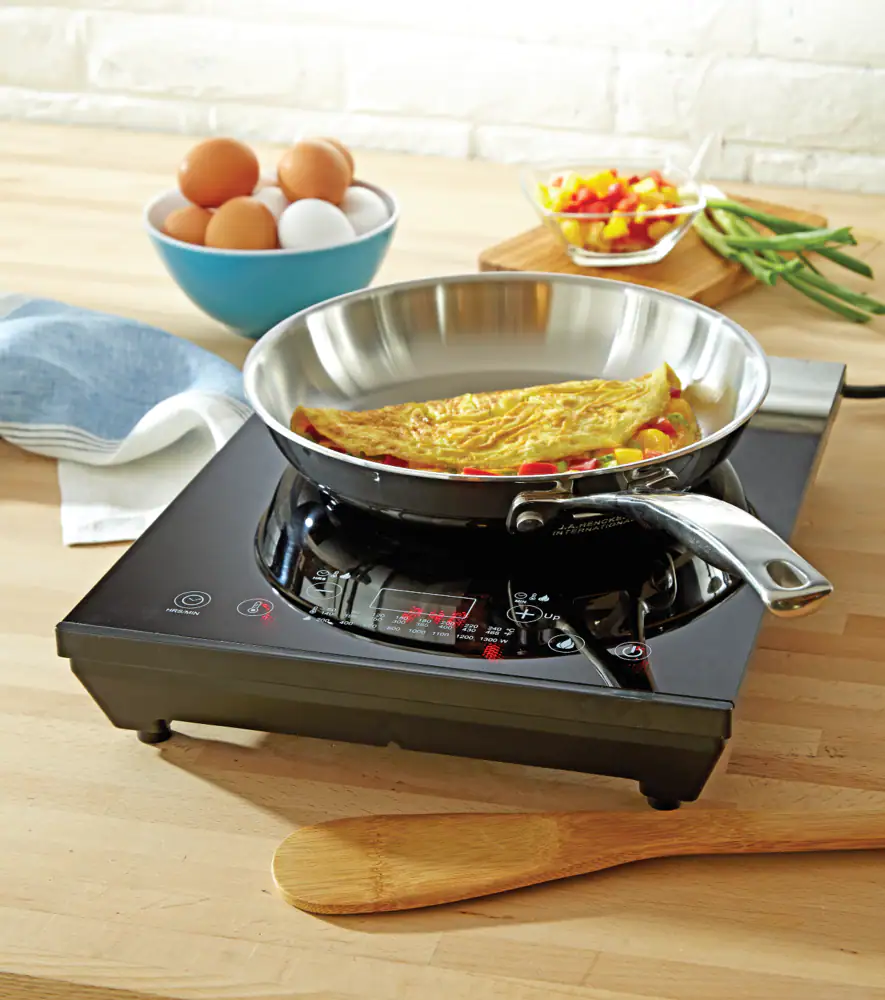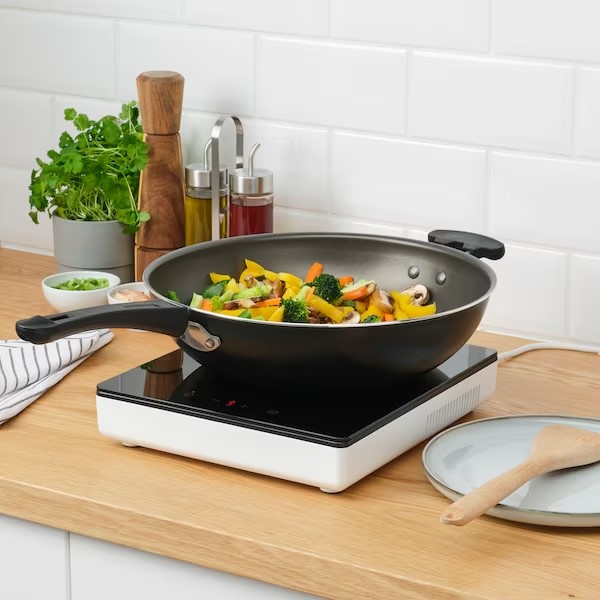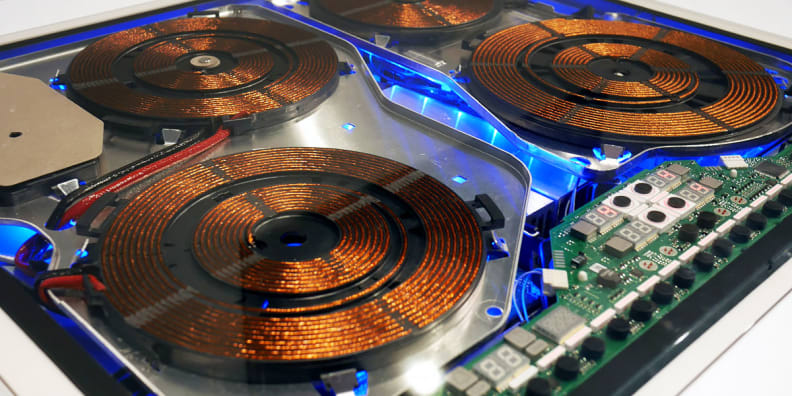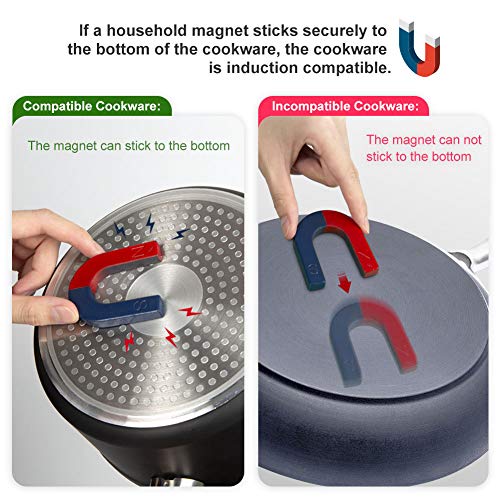Portable induction cooktops offer an inexpensive way to make a quick switch to energy-efficient cooking. Combine them with a renewable power source, and you can cook with a clean conscience. Unless you are frying stuff… That will still make you feel guilty.

What makes induction cooking climate-friendly?
Energy efficiency. Rather than heating the surface of your cooktop, induction cooktops use induction heating to warm your pots and pans. They are more energy-efficient because they transfer heat directly to your cookware. Your pot or pan is heated quickly and evenly, and you waste less energy during cooking.
Greenhouse gas reduction. According to a recent study from Stanford University, some natural gas cooking stoves may leak methane even when turned off. Methane is a greenhouse gas that contributes to climate change. Climate scientists believe that cutting methane emissions is important to slow the rate of global warming. – source: https://www.efficiencyvermont.com/blog/how-to/induction-a-safer-and-more-environmentally-friendly-kitchen-upgrade


Induction cooktops are extremely energy efficient, fast, and precise as induction technology transfers energy directly into magnetic cookware. – https://www.ikea.com/us/en/p/tillreda-portable-induction-cooktop-1-zone-white-10493520/

Although they resemble electric smooth-top burners, induction cooktops don’t have burners underneath the surface. Induction cooking uses electromagnetic energy to heat pots and pans directly. In comparison, gas and electric cooktops heat indirectly, using a burner or heating element, and passing radiant energy onto your food.
As you can imagine, it’s far more efficient to heat cookware directly instead of indirectly. Induction is able to deliver roughly 80% to 90% of its electromagnetic energy to the food in the pan. Compare that to gas, which converts a mere 38% of its energy, and electric, which can only manage roughly 70%.
That means induction cooktops not only heat up much faster, but their temperature controls are far more precise. “It’s an instantaneous reaction in the cookware,” says Robert McKechnie, product development manager at Electrolux. “With radiant, you don’t get that.” – source: https://reviewed.usatoday.com/ovens/features/induction-101-better-cooking-through-science

Induction stoves and cooktops require specific cookware. While most cookware, especially stainless steel cookware, is compatible with induction, your older cookware may need to be replaced if you’re going with induction. Induction-safe cookware contains iron particles, which activate and create heat when they interact with induction heaters. Make sure new pots and pans are marked “induction safe.” If you’re unsure about older ones, do the magnet test: If a magnet sticks to the bottom, it can be used with induction. – source: https://www.goodhousekeeping.com/appliances/a28435170/induction-stove-cooktop-pros-cons/
APPROXIMATE MSRP: A good single burner portable cooktop can be found for $40 – $70.
